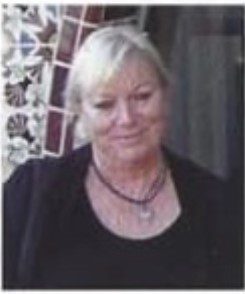Get to Know Camp Pendleton: Our Next-Door Neighbor
By Christine Lampert, Architect, AIA, NCARB
W hen San Clemente was built in the 1920s it was a new town surrounded entirely by ranch lands. The large ranch to the south would eventually become the Camp Pendleton Marine Corps Base. The base was established in 1942 during World War II, but the land has a long history.
The land that became the base is more than 125,000 acres of mountains, streams and valleys, and Southern California’s only free-flowing river and longest undeveloped coastline. There is also a long history of Native Americans living on the land. The Acjachemen people lived along San Mateo Creek long before the Spanish came to California. These hunter-gatherers built boats of tulle to catch fish. They also wove baskets and made medicines from native plants. The creek today runs through the base and terminates in the Pacific Ocean at Trestles Beach.
The history of the land is also one of ranches and cattle herding. There are historic structures, including the Las Flores adobe house, which was built in 1864. It is a prime example of Monterey Style Spanish Colonial architecture. The last family member lived there until 1967 and then the house was fully restored by the Marines and is now a protected registered National Historic Landmark.
Currently, 90 American bison live and roam free on the base. They have been there since 1973 when the San Diego Zoo began to gift the base 14 bison over the period of six years. The herd has grown over the years and the base maintains a strong program to maintain and protect the bison. The Pendleton herd is of only two protected bison herds in all of California. The other herd resides on Catalina Island.
After World War II, the base leased a large portion of land to farmers who grew vegetables. These farmers eventually were phased out, but some of their families still live in San Clemente today.
One of the greatest gifts that we have received from Camp Pendleton is San Onofre State Park. This large section of coastline became a state park in 1971 when then-President Richard Nixon negotiated the contract with the base for 160 acres of the best surf in California.
During the Vietnam War, 20,000 Vietnamese families were brought to Camp Pendleton. Many of those families ended up living in San Clemente for several years. Anyone who lived in San Clemente in 1975 probably remembers the Alpha Beta grocery store on El Camino Real, which had a large section of Vietnamese food available.
Camp Pendleton has preserved the natural environment from the sea to the mountains to the east. It serves two purposes: one as the largest military base on the west coast and also one of the largest preserved natural environments on the Southern California Coast.
San Clemente has always welcomed the military families and the many retired veterans that have settled here. Tours are available of the historic Santa Margarita Ranch House and the Marine Corps Mechanized Museum. Tours must be in groups and can be as large as 50 people. To reserve a tour, call: 760-725-5758.
Christine Lampert of Lampert Dias Architects is a member of the American Institute of Architects and is certified with the National Council of Architectural Registration Boards. She has lived in San Clemente for more than 45 years, and also resides part time in Hong Kong.

By Christine Lampert, Architect, AIA, NCARB
